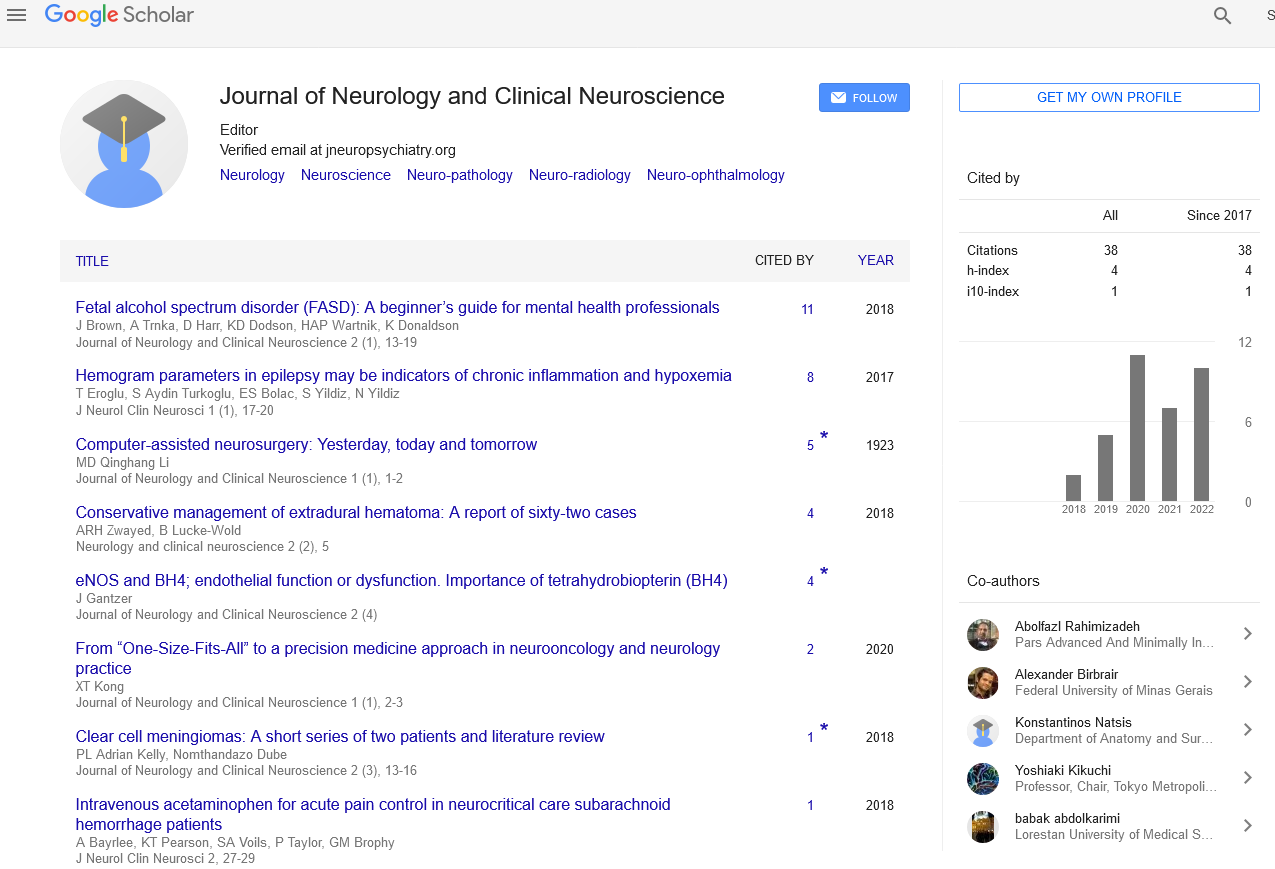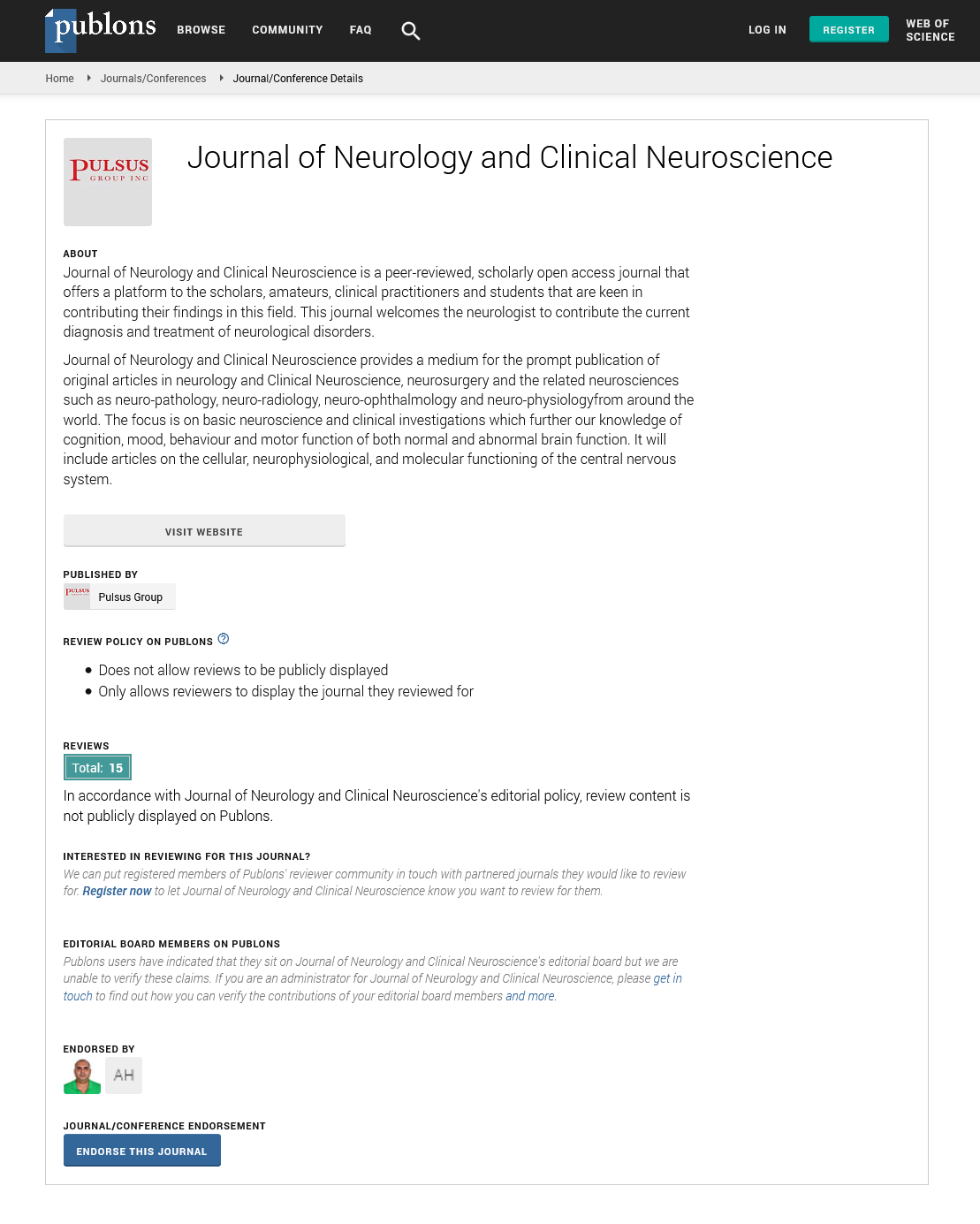Sign up for email alert when new content gets added: Sign up
Role of Neuromelanin in Parkinson’s disease
7th International Conference on Parkinson’s & Movement Disorders
November 11-12, 2019 | London, UK
Iria Carballo-Carbajal
Vall d ’ Hebron Research Institute, Spain
Keynote: J Neurol Clin Neurosci
Abstract :
Statement of the Problem: In Parkinson’s disease (PD), there is a preferential degeneration of melanin-containing neurons, in particular dopaminergic neurons of the substantia nigra (SN). Loss of nigral neurons results in the typical motor symptoms of the disease, which constitute the cardinal clinical diagnostic criterion for PD. However, the potential contribution of neuromelanin to PD pathogenesis remain elusive because, in contrast to humans, common laboratory animals, such as rodents, lack neuromelanin.
Methodology & Theoretical Orientation: Unilateral vector-mediated expression in rat of human tyrosinase (hTyr), rate-limiting enzyme for the synthesis of peripheral melanins, resulted in an age-dependent production of neuromelanin within nigral dopaminergic neurons. Neuromelanin levels in rat where comparable to those reached in elderly humans, allowing for the first time to assess in vivo the consequences of progressive neuromelanin accumulation.
Findings: Accumulation of neuromelanin above a specific threshold ultimately compromised neuronal function and led to an age-dependent PD phenotype comprising nigrostriatal neurodegeneration, hypokinesia, impaired dopamine release and Lewy body-like inclusion formation. In humans, both PD patients and pre-symptomatic subjects reached this pathogenic threshold of intracellular melanin, in contrast to control healthy brains. At the molecular level, decreases in both autophagic and ubiquitin-proteasome degradation system activities pointed to a general failure of cellular proteostasis. Indeed, enhancement of lysosomal proteostasis by overexpressing the transcription factor EB (TFEB) reduced neuromelanin levels and prevented neurodegeneration in tyrosinase-expressing animals.
Conclusion & Significance: Our results reveal a novel pathogenic scenario in PD, in which the continuous, agedependent build-up of neuromelanin within autophagic compartments may ultimately exhaust the vesicular storage capacity of the cell when reaching a certain threshold of accumulation, imparting general proteostasis in the cell. Modulation of neuromelanin accumulation may thus provide unprecedented therapeutic opportunities for PD and brain aging.
Biography :
Iria Carballo-Carbajal has long expertise in studying the cellular mechanisms underlying neurodegeneration in Parkinson’s disease (PD). In the last years, she has extensively investigated the molecular bases involved in LRRK2-associated pathogenesis as well as in the regulation and pathological spreading of alpha-synuclein using different cell-based, iPSC-derived and in vivo animal models. Her current research interest focuses on the potential role of neuromelanin in PD. A major contribution has been the generation of the first in vivo model of melanized substantia nigra in rodents, showing that progressive accumulation of this dark pigment with age can finally lead to a parkinsonian phenotype, which reproduces main motor, functional and neuropathological features observed in patients. These results, recently published in Nature Communications, may open the door to new therapeutic avenues and to a paradigm shift in the field.
E-mail: iria.carballo.carbajal@gmail.com





